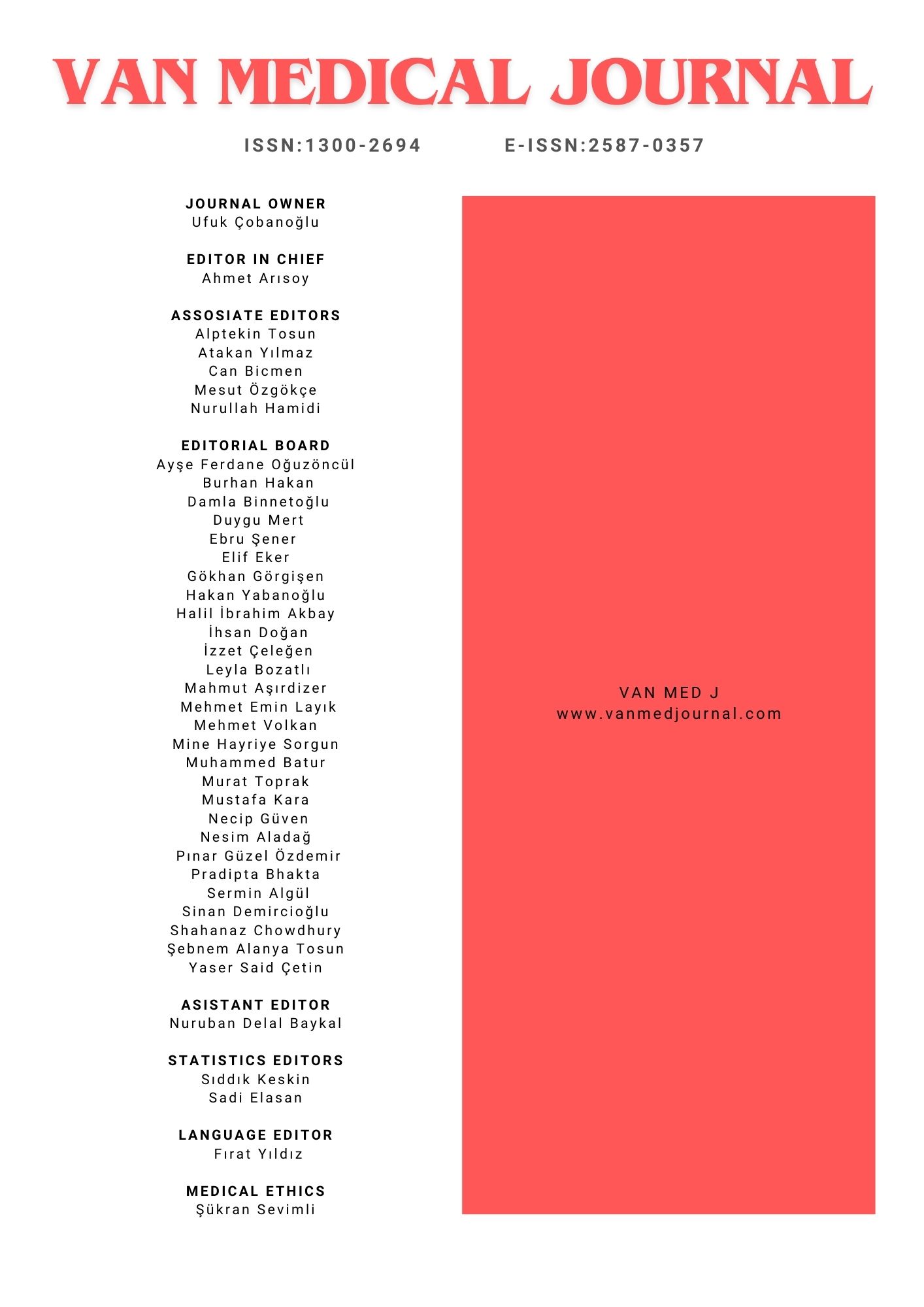Retrospective Analysis of Demographic, Clinical, Biochemical, and Histopathological Findings of Gastrointestinal Polyps
Nuray Güllü Sarı1, Sadi Elasan2, Vedia Altürk3, Yonca Yılmaz Ürün41Department Of Internal Medicine, Van Yüzüncü Yıl University Medical Faculty, Van, Turkey2Department Of Bioistatistics, Van Yüzüncü Yıl University Medical Faculty, Van, Turkey
3Department Of Pathology, Van Yüzüncü Yıl University Medical Faculty, Van, Turkey
4Department Of Gastroenterology And Hepatology, Van Yüzüncü Yıl University Medical Faculty, Van, Turkey
INTRODUCTION: In this study, we aimed to demonstrate the histopathological, clinical, demographic, and biochemical features of upper and lower gastrointestinal (GI) tract polyps. Additionally, we aimed to investigate the effect of polyp localization on endoscopic intervention indications, polyp size, and biochemical, histopathological, and demographic characteristics.
METHODS: Endoscopic procedures performed in the endoscopy unit at the XXX University XXX Medicine Center between 2016-2021 were scanned. 900 patients with polyps in the GI tract were included. Biochemical data, histopathological data, endoscopic procedure indications, and demographic data of the patients were evaluated by statistical analysis.
RESULTS: Polyps were divided into three groups according to polyp size: dimunitive polyps 61.3% (n=552); small polyps 30.3% (n=273); and large polyps 8.3% (n=75). The polyps were also divided into three groups according to their histological features: noeplastic polyps (including; adenomatous polyps (38.3%), and serrated polyps (0.3%), malignant polyps (3.7%), and non-neoplastic polyps (57.2%). The incidence of adenomatous and malignant polyps was significantly higher in the left colon, whereas that of non-neoplastic polyps were significantly higher in the upper GI tract (p=0.001). The incidence of adenomatous polyps was significantly higher in large polyps (p=0.001). We determined the CRP and leukocyte values to be significantly higher in large polyps than in other polyp sizes (p=0.01,p=0.008,respectively). The platelet count was significantly higher in malignant polyps(p=0.026).
DISCUSSION AND CONCLUSION: This study revealed significantly higher leukocyte counts in polyps with lower GI tract and left colon localization. Additionally, higher platelet counts in polyps with malignant pathology and higher CRP levels and leukocyte counts in large polyps were detected.
Keywords: Polyps, Endoscopy, Colonoscopy, Inflammation
Manuscript Language: English

